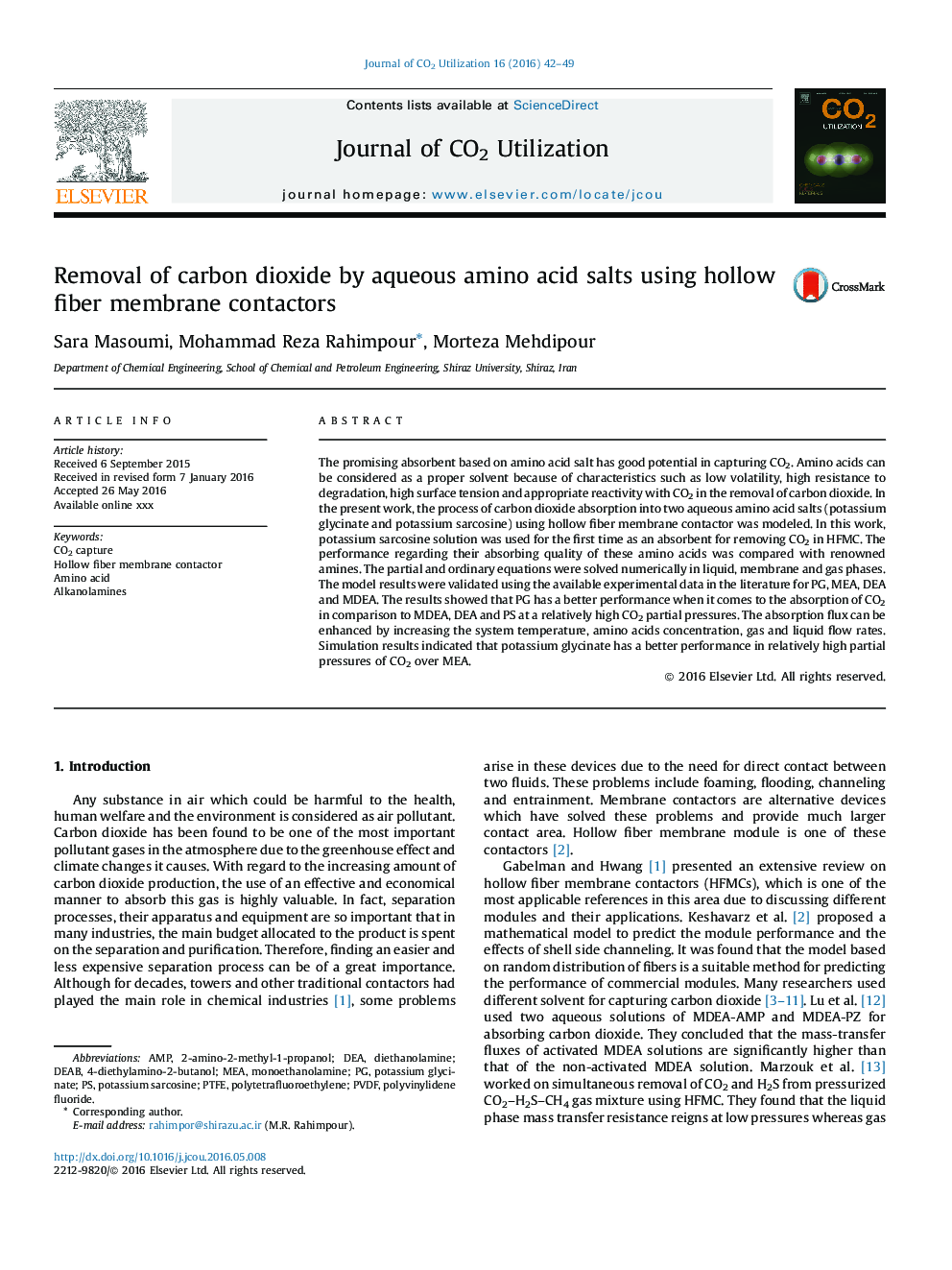| Article ID | Journal | Published Year | Pages | File Type |
|---|---|---|---|---|
| 63517 | Journal of CO2 Utilization | 2016 | 8 Pages |
•Amino acid solution was applied in a membrane contactor for CO2 removal.•Potassium glycinate/sarcosine solution possesses higher flux than DEA and MDEA.•Potassium glycinate has better performance in the relatively high CO2 partial pressure over MEA.•Effects of different parameters were investigated on the CO2 capture.
The promising absorbent based on amino acid salt has good potential in capturing CO2. Amino acids can be considered as a proper solvent because of characteristics such as low volatility, high resistance to degradation, high surface tension and appropriate reactivity with CO2 in the removal of carbon dioxide. In the present work, the process of carbon dioxide absorption into two aqueous amino acid salts (potassium glycinate and potassium sarcosine) using hollow fiber membrane contactor was modeled. In this work, potassium sarcosine solution was used for the first time as an absorbent for removing CO2 in HFMC. The performance regarding their absorbing quality of these amino acids was compared with renowned amines. The partial and ordinary equations were solved numerically in liquid, membrane and gas phases. The model results were validated using the available experimental data in the literature for PG, MEA, DEA and MDEA. The results showed that PG has a better performance when it comes to the absorption of CO2 in comparison to MDEA, DEA and PS at a relatively high CO2 partial pressures. The absorption flux can be enhanced by increasing the system temperature, amino acids concentration, gas and liquid flow rates. Simulation results indicated that potassium glycinate has a better performance in relatively high partial pressures of CO2 over MEA.
